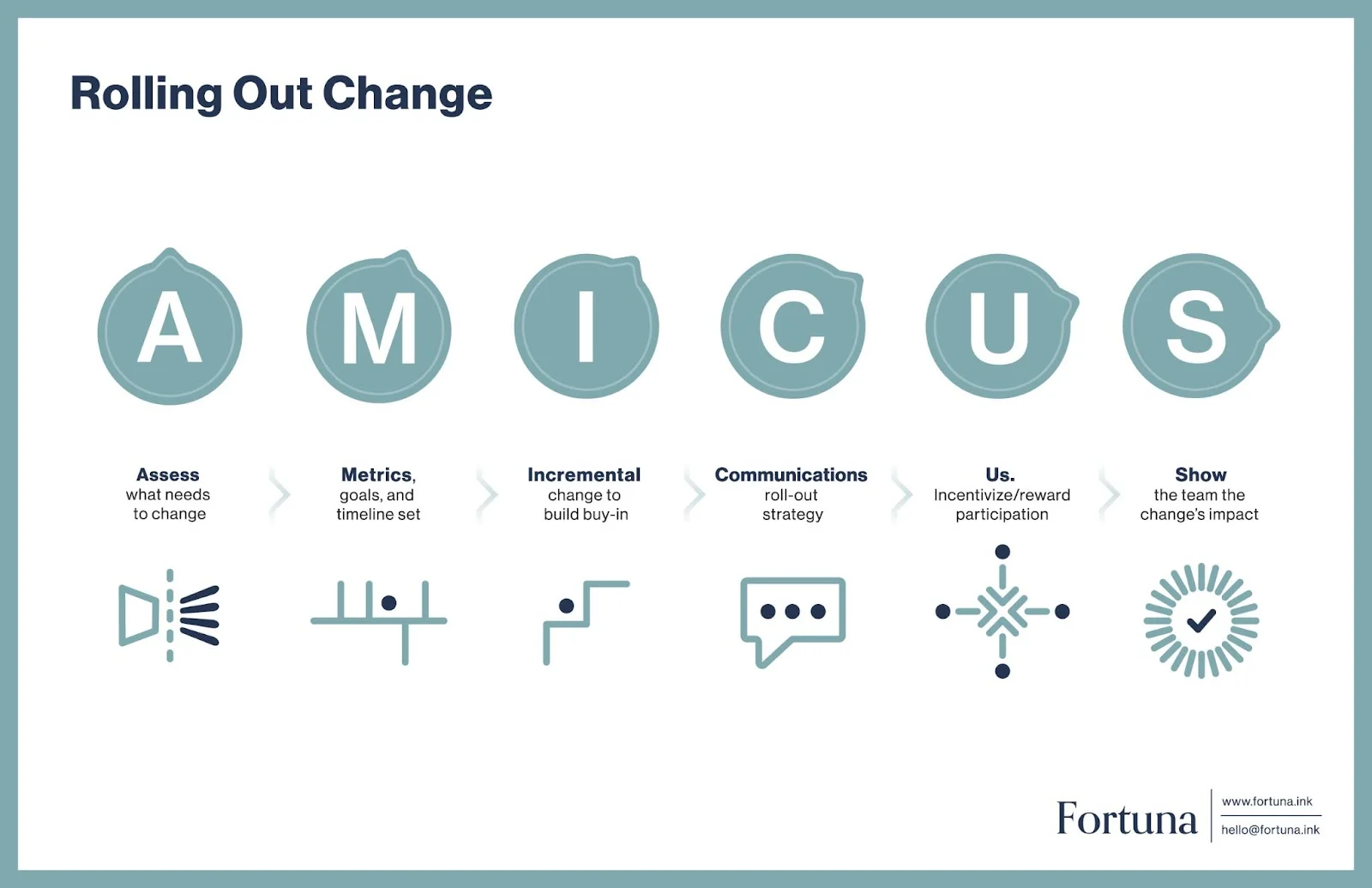Workplace change is inevitable. No matter what industry you are in, or what you do for work. This can be a significant challenge because, ultimately, change is painful. It hurts. Even seemingly minor changes like a new process, a fresh product feature or adding a new team member can be hard for most of us.
While often constructed to bring about positive change, initiatives like this can quickly veer off course if not everyone is on board. In fact, McKinsey tells us that a staggering 70% of change programs fail, and much of this failure can be attributed to employee resistance.
With the need to move fast, leaders have to balance pushing changes through quickly while keeping teams motivated. This can be a delicate balance, and it’s critical that they understand where employees’ fear and resistance around change come from.
Why workplace change is challenging
Harvard Business School scholar Rosabeth Moss Kanter has dedicated her career to studying the psychology of change in the workplace. She has identified several core reasons why change can be so agonizing:
- Loss of control: For many individuals, autonomy is a driving force. Changes that disrupt their sense of control can trigger strong resistance.
- Excess uncertainty: No one enjoys being left in the dark. When changes are shrouded in uncertainty, it can lead to anxiety and resistance.
- Surprises: Shocking decisions or news can provoke defensive reactions, making it difficult for employees to embrace change.
- Loss of face: Some employees perceive change as a criticism of their work or as a personal failure, causing them to resist it.
- Concerns about future competence: Anxiety about one’s ability to excel in a new environment, with new tools and methods, can be a significant source of resistance.
- Ripple effects: Changes can have external consequences, such as displacing current projects, teams or job roles, which can provoke resistance.
- More work: While some thrive on innovation and are willing to put in extra effort, others may resist change because it requires revising, adapting and learning new ways of working, which can be time-consuming.
- Past resentment: Sometimes, changes unearth long-standing grievances, becoming the final straw that triggers strong resistance.
The resistance resulting from one or many of these core foundations can manifest in many ways. Team members can exhibit protective or secretive behavior, repetitive questioning, public expressions of frustration or friction around decision-making processes.
“When you are intentional about rolling out change, your chances of success increase by 40%.”
— McKinsey, Changing Change Management
No one wants to work in an organization where these feelings and behaviors manifest. But leadership can absolutely get ahead of changes to prevent their teams from falling too deeply into this cycle of change resistance.
Make change amicable, approachable
In response to – and in preparation for – any major or minor change initiative, leaders can prioritize employee agency and autonomy. With years of experience leading teams, consulting and research with numerous respected leaders, I found that a specific formula works incredibly well for teams faced with this challenge: AMICUS – Assess, Metrics, Incremental, Communication, Us, Share:

Assess what needs to change
Before embarking on any change initiative, it’s essential to thoroughly assess the situation. What exactly needs to change, and why? Understanding the root causes is crucial.
Set Metrics, goals, timeline
Establish clear metrics, goals and a timeline for the change – and make sure to share it with the team. This provides a sense of direction and helps employees see the path ahead.
Build buy-in with Incremental change
Instead of implementing radical changes all at once, introduce them incrementally. This allows employees to adjust gradually and build confidence along the way.
Create a Communication plan
Effective communication is key. Develop a comprehensive communication plan that keeps everyone informed, addresses concerns and provides regular updates on progress.
Incentivize, reward Us
Acknowledge and reward employees for their contributions to the change process. This can be done through recognition, incentives or career development opportunities.
Show the Impact
Finally, demonstrate the positive impact of the change. When employees see tangible benefits and improvements resulting from their efforts, they are more likely to embrace future changes.
By implementing the AMICUS framework, organizations can transform the painful process of change into a more collaborative and positive experience. When employees are given a voice, opportunities for growth, and a clear vision of the future, resistance naturally diminishes. And the path to success becomes far more attainable.
In any industry where change is truly constant, mastering this art of change management is not just a skill, it’s a necessity for sustainable growth and success.
About the author
Vanessa Gennarelli is the author of Surviving Change At Work and is the principal of Fortuna, a change management firm, and the chief operating officer for Workbrew. She has led cross-functional teams at rapidly growing organizations, including GitHub Education through its acquisition by Microsoft. While at one of the largest tech companies on the planet, she learned how to navigate cultural differences, integrate new processes, and help direct reports thrive through change.
To learn more and subscribe to HR Morning, visit hrmorning.com.
Contents of this article remain the property of the author and/or publisher.
 Drive Results in Your Organization
Drive Results in Your Organization